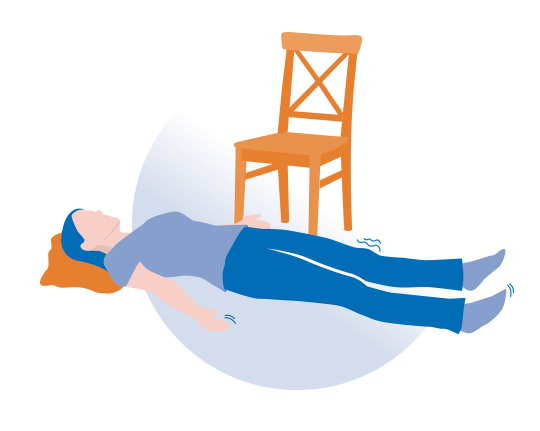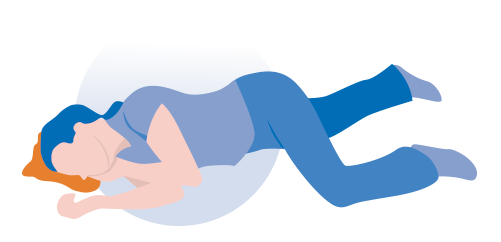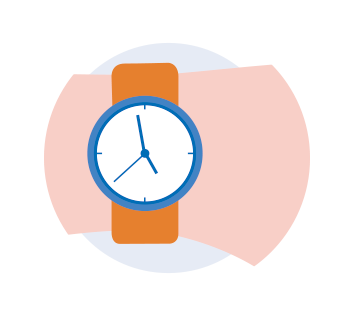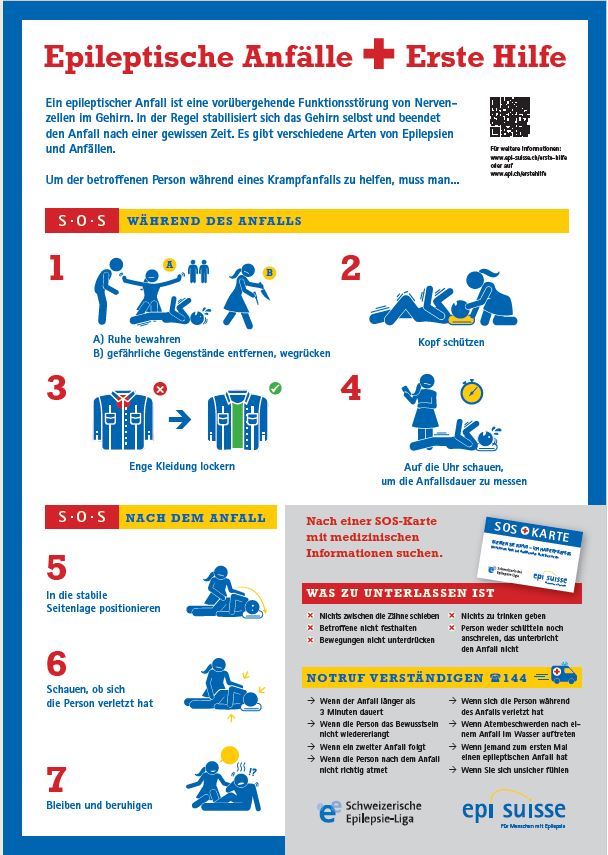First aid during a seizure

It is almost impossible to stop a seizure once it has begun. The most important thing is to prevent the person having the seizure from being injured.
During a major epileptic seizure the person will lose consciousness and fall to the ground. Their body will go stiff and they will jerk and shake. These movements are generally severe.
A seizure usually lasts one to two minutes. It is uncommon for a seizure to last longer than that, but it could last only a few seconds. Some people become confused after having a seizure and need to rest or sleep.
What should you do?
- Stay calm
- Remove the person from any danger
- Move any nearby objects that could cause injury
- Put something soft under their head
- Loosen any tight clothing around their neck
- Take off their glasses
- Look at the time: Note the length of the seizure
During the seizure:
- Do not put anything between the person’s teeth
- Do not attempt to prevent the convulsions
- Do not sit the person up
- Do not give them anything to drink
- Do not attempt resuscitation
Short film «First aid»

After the seizure:
- Place the person into the recovery position
- Clear their airways (of saliva or vomit)
- Stay with the person while they remain confused
- Offer the person somewhere to rest, and offer help and assistance (but do not insist)

Medical help is not usually necessary unless:
- The convulsions last longer than 3 minutes
- The person remains unconscious
- The person suffers further seizures
- The person has serious injuries
- The person is no longer able to breathe properly.
During other types of seizure, for examples those involving confusion, clumsiness, absences, etc., remain calm and stay with the person until the seizure is over. Then tell the person how long the seizure lasted and what happened.
Author: Günter Krämer
Last updated: 01/2023.


